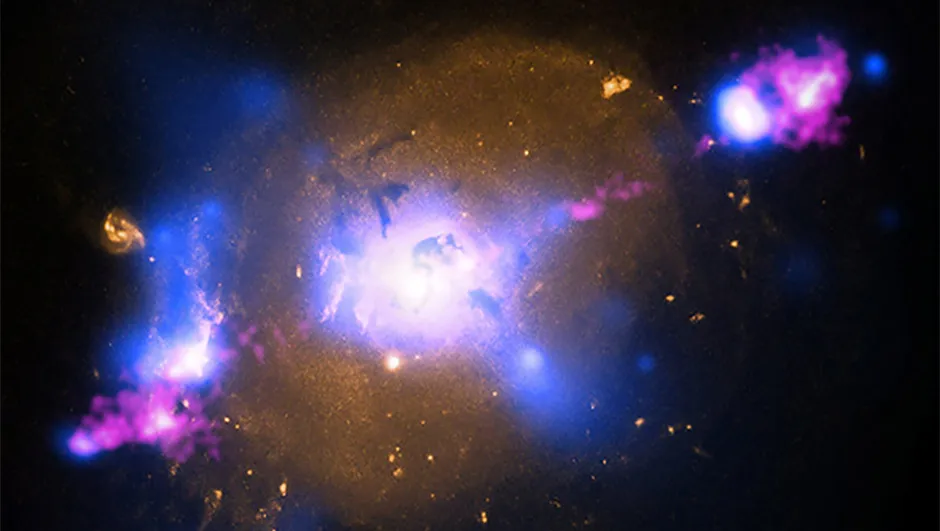Astronomers have carried out observations to learn more about the powerful, bright jets of material ejected by black holes.
These jets are generated as material falling into a black hole is heated and then shot outwards, forming two bright columns along the black hole’s axis of rotation.
Astronomers have been looking at two X-ray binary systems using NASA's NuSTAR space telescope and the ULTRACAM on the William Herschel Observatory in La Palma.
These are star systems containing a black hole that ‘feeds’ off material from its stellar companion.
The systems were studied at different points during periods of bright outbursts.
These outbursts are caused by a disc of material surrounding the black hole - known as an ‘accretion disc’ - being heated by inward-falling material.
One system is V404 Cygni, which reached almost peak brightness when it was observed in June 2015.
The other is GX 339-4.
This binary system was less than 1 per cent of its maximum expected brightness when it was observed.
Despite the differences between the two, both showed a delay of about one tenth of a second between the X-ray light being detected by NuSTAR and optical light being detected by the ULTRACAM.

"One possibility is that the physics of the jet is not determined by the size of the disc, but instead by the speed, temperature and other properties of particles at the jet's base," says Poshak Gandhi, lead author of the study.
An explanation is that X-ray light originates from material close to the black hole.
This material is then propelled along the jet by the black hole’s magnetic fields.
This causes particles to collide at nearly light speed, energising the plasma and causing it to glow in optical light.
By using the measured delay between the two forms of light, the team behind the study were able to calculate an expanse of about 30,000 kilometres, representing the ‘inner acceleration zone’ of the jet; where plasma begins to emit light.
They have also compared their results with current understanding of supermassive black holes, which are much bigger than the black holes in the study.
In one system, called BL Lacerate, which is 200 million times the mass of our Sun, delays of millions of times greater have been calculated.
Perhaps the size of acceleration area of the jets is related to the mass of the black hole.

